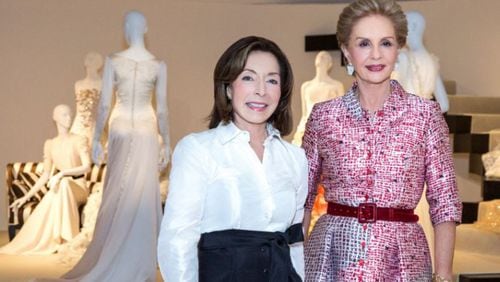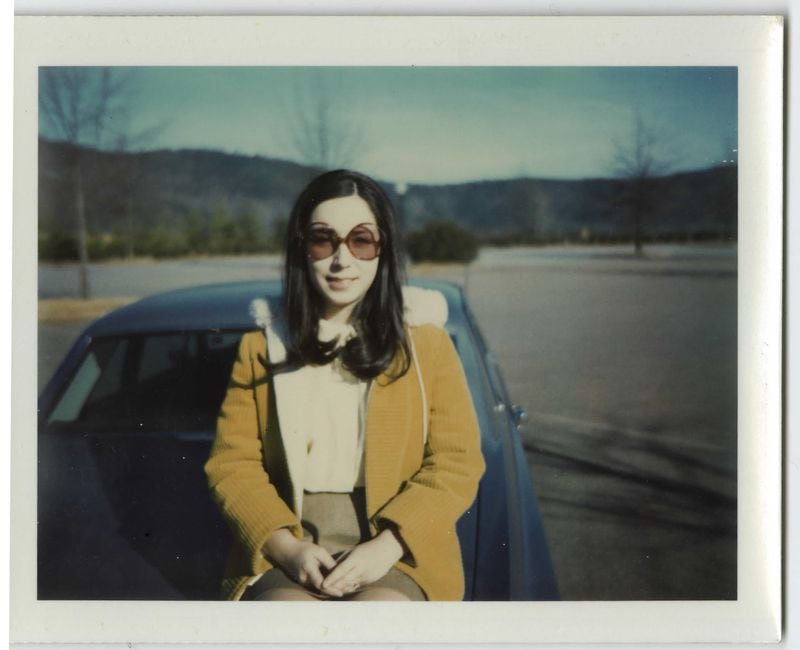THIS IS A CONTRIBUTED ESSAY BY PAULA WALLACE, FOUNDER AND PRESIDENT OF THE SAVANNAH COLLEGE OF ART AND DESIGN (SCAD).
Editor’s note: Fashion is by its very nature exclusive but lately the fashion world is undergoing a shake up. Atlanta has long struggled to find its place in American fashion. Here, Paula Wallace, founder and President of SCAD shares her thoughts on why Atlanta is positioned to become the next great fashion capital.
Atlanta has always been a nurturing city for the fashion-minded. I have the evidence to prove it, at home in my childhood jewelry box: three small identical brass pins, awarded in my youth by the Singer Sewing Center.
This humming store and studio for the fashion-conscious was located on Peachtree in the 1960s, where the faint acrid smell of sewing machine motors admixed with the sweet exertions of other girls like me who took the bus downtown for sewing classes.
One assignment, as I recall, was to create a pencil skirt in wool and a blouse of patterned silk, with a jacket lined in the same silk. We didn't call it fashion, although that's precisely what it was, learning to create sharp, smart clothes we wanted to wear. I received a brass pin for each series of workshops I completed.
In my youth, Peachtree wasn't quite Fifth Avenue or London's Bond Street, but Atlantans have always cared about style and appearance. Nary a weekend passed by, for instance, without my mother attired in her Sunday best of hat, gloves, and pearls. From its very genesis, our "City Too Busy to Hate" has always been about movement and enterprise, where deal makers and churchgoers alike look the part.
My Grandmother Rinnie handmade my recital dresses, but we did travel downtown quite often to Rich's, where I was asked, at age eight or nine, to model in a few in-store runway shows. What a thrill! We were paid in clothes and shoes. I recall one such occasion, when my mother suggested I choose the black patent Mary Janes as my modeling compensation. Instead, I selected swoon-worthy red velvet slippers with seed pearls across the vamp.
"Oh, Paula," she said. "So impractical!"
How to explain that those red velvet shoes helped me float two feet above the sidewalk? Even as a girl, I understood the power of fashion to elevate the human spirit.
The city of Atlanta continued to nurture my nascent love of fashion when, later, during college, I worked as a bookkeeper at the Continental Insurance Company. I spent many half-hour lunches (and perhaps too much of my income) speed walking down Peachtree to JP Allen and Regenstein’s, where the miniskirt had landed with the weight of a hundred atom bombs. Chanel No. 5 and Shalimar mixed in the strangely cool air with a menagerie of professionals who knew how to dress.
I wanted to believe the numerous $25 sundresses I bought on these lunch excursions were a worthy investment: As a summer intern in a stylish and upwardly mobile city, I wanted to look the part, somewhere between carefree student (which I was, sort of) and purposeful career woman (which I wanted to be, definitely). Atlanta schooled me in the aspirational customs of fashion. We have always been a city of doers and dreamers. We announce our identities in part through a personal assemblage of functional and decorative garments and accessories.
I carried that lesson with me to Savannah in the 1970s, where I moved to create SCAD in the enchanted but cloistered old coastal city that made Peachtree seem like Paris — until our vibrant SCAD students arrived.
These students, from New York and New Delhi and points between, transformed Savannah almost overnight from sleepy Southern town to sartorial hotspot, every other student seemingly having stepped out of an Esprit or Benetton ad.
By the early 2000s, with Vogue legend André Leon Talley annually presenting his namesake honor to distinguished SCAD guests, including Miuccia Prada and Oscar de la Renta, I found my own style evolving. To honor our guests, I wore their designs. To honor our students, I listened to their desires, and one of those desires was to study in Atlanta. On academic study trips to the city, our students sensed the same aspirational vibrancy and entrepreneurial bravado that I had felt in my hometown as I grew up.
Originally, I hadn't planned on offering fashion at SCAD Atlanta, but a few conversations quickly changed my mind, including a chat with salon legend Carey Carter of Carter Barnes.
"Are you going to offer fashion at the new campus?" Carey asked.
"I don't think so," I said. "Why? Do you think we should?"
"Oh, Paula!" he said. "People in Atlanta are starved for fashion! Do it!"
Atlanta was ready for a preeminent fashion program. The 1996 Summer Olympics, a decade earlier, had announced Atlanta as the world's next great city, and the exploding hip-hop scene, with style-woke artists from André 3000 to 2 Chainz, made fertile ground for fashion.
A healthy style ecosystem requires a vibrant cultural milieu, and when SCAD planted its Midtown flag in 2005, Atlanta was unmistakably ready to expand its reputation.
Today, nearly 2,500 students are enrolled at SCAD Atlanta, with 424 studying fashion disciplines. Nearly 6,000 students and alumni have been educated in the SCAD School of Fashion as a whole, including graduate and undergraduate degree programs in Savannah and Hong Kong.
This army of designers, including many from Atlanta, go on to work for Alexander Wang, Ralph Lauren, Marc Jacobs, and others around the world, while many more choose to live and create in the South, where designers like Heidi Elnora,Billy Reid and Alabama Chanin have helped export a distinctly Southern aesthetic to the world. When I think about these distinctly Southern brands, I think of the personality, detailing, and timeless qualities evident in each collection. These designer's creations have hidden details that only the wearer notices and abundant celebratory spirit — and they use upcycled material.
Atlanta is retail ground-zero for this design ethos, found at haberdashers like Sid Mashburn and the stalwart Guffey's and boutiques such as Abbey Glass, Ann Mashburn, and Reese Witherspoon's Draper James. In Little Five Points, Wish creates an inviting atmosphere with the best selection of athletic shoes and urban wear in a lovingly refurbished industrial space, while Peoples on Roswell Road offers a minimalist experience for maximal style. Westsiders flock to Steven Alan and Lululemon, while The Shops Buckhead Atlanta serves up Tom Ford and Etro for the international cognoscenti.
What Atlanta needs now is more designers, more ateliers. We have homegrown talent in abundance, but powerful and alluring design opportunities beckon young SCAD designers to Los Angeles, Barcelona, Milan, and beyond.
Atlanta is ready and ripe for a Cambrian explosion of fashion. Ours is a city of youth, diversity, and creative entrepreneurship, with a new generation of doers and dreamers and sophisticated dressers who understand fashion as a wearable commodity capable of being elevated to fine art. The time is now.
The legendary success of Jeffrey Atlanta has given confidence to many Atlantans that something new in fashion retail can be born here and go on to conquer the world — or at least New York, which is pretty much the same thing. (Future’s sneaker line with Reebok launched at Jeffrey Atlanta last year.) Stylist Shun Melson outfits the stars in some of Atlanta’s finest wares, and hot new designer Cedric Brown has captured the attention of high-profile customers from actor Joe Torry to Young Thug.
With one of the world's largest and most preeminent schools of fashion located in the heart of Atlanta, more and more young designers like Caroline Mae Heidenreich are eager to open their own studios right here in Georgia.
After studying fashion in Atlanta, multimedia artist Brittany Bosco launched a career as an Atlanta-based recording artist and entrepreneur with her own creative agency, Slug. Tens of thousands of fashion-forward musicians, performers, directors, actors, writers, and artists now call the city home, and now that Georgia is the world's No. 1 region for film and TV production, Atlanta is further poised to shape American style. Count on it: Wherever film is, a tsunami of new fashion is soon to follow.
Atlantans have always looked good, and our record-shattering entertainment industry, contemporary boutiques and ateliers, and fashion-conscious citizenry are a remarkable sign of the city's rising prominence as a fashion capital. Whatever the future of American fashion looks like, you can bet it will look a lot like the city we call home: Sharp. Smart. Together.
I've got the Singer Sewing Center pins to prove it.
About the Author








